To ease deployment, the Barracuda SecureEdge VTx units are available as pre-built OVA images that can be imported into your VMware hypervisor. You do not need to create or configure a virtual machine (VM). Before deploying the SecureEdge VTx unit, verify that the host system meets the minimum storage requirements and review the resource recommendations for the production system.
Before You Begin
- For information regarding the sizing of your CPU, disk, and RAM, see Virtual Systems (VTx) Deployment.
- Before you start the Barracuda SecureEdge VTx for the first time, assign a manual MAC address to the first virtual network interface. This lets you move the VM later without invalidating your license.
- Download the VMware OVA image from the Barracuda Download Portal.
Step 1. Download and Import the OVA Image
- Connect to your VMware hypervisor using the vSphere client.
- Click File> Deploy OVF Template.
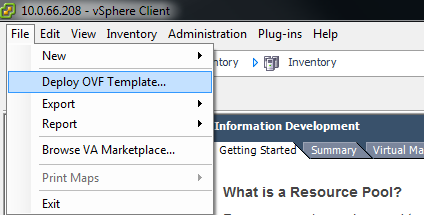
- In the deployment wizard, click Browse and select the OVA image. Click Next to proceed.

- The Template Details page opens. Click Next to proceed.
- Enter a name for the virtual machine to be created. Click Next to proceed.

Select a Resource Pool and click Next to proceed.
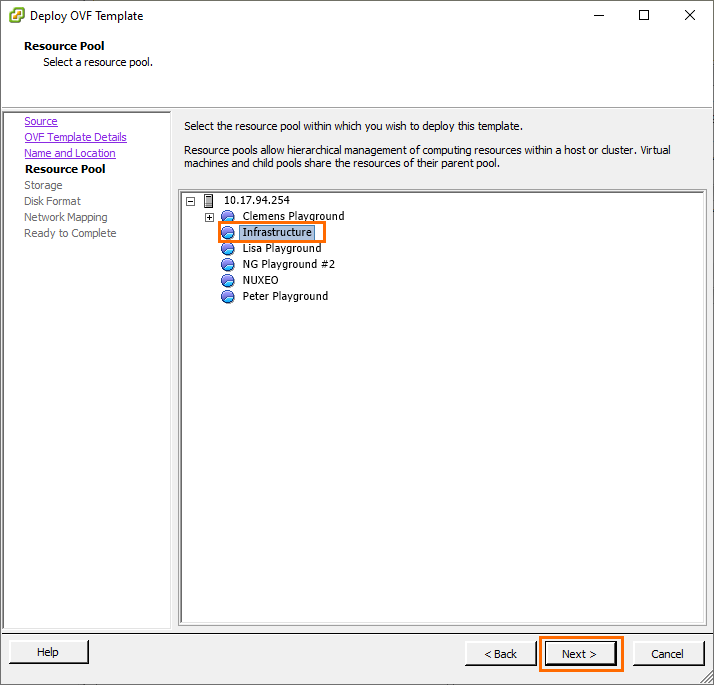
The Storage blade opens. Select the datastore that the SecureEdge VTx unit should be installed on, and click Next to proceed.
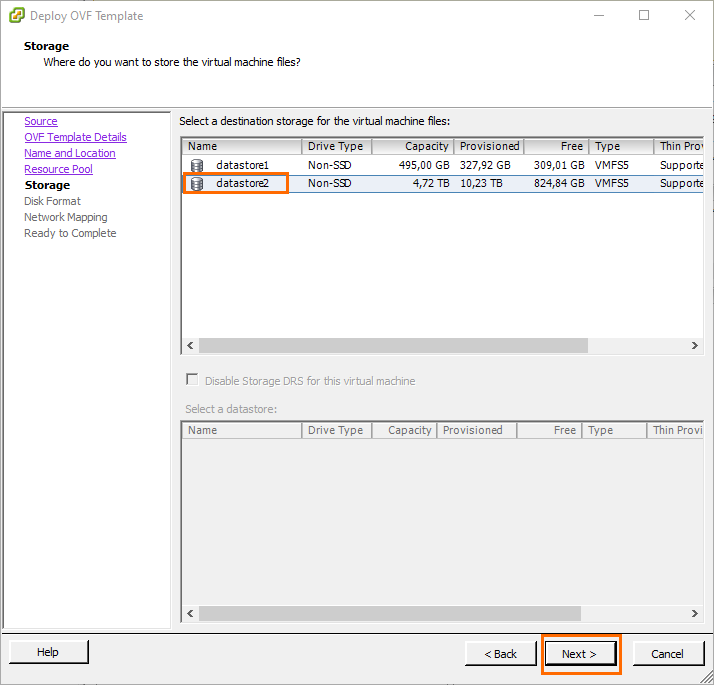
The Disk Format Blade opens. Select a disk format.

- Map to the required network in your existing inventory, and then click Next to proceed.
P4 must be connected to a network with Internet connection using DHCP. Port 1 is reserved for high availability. If you are using high availability, connect port 1 to a switch where only the port 1 of the other virtual machine of the high availability cluster is connected to. Map the other ports according to your configuration in How to Create a T/VT Site Configuration in Barracuda SecureEdge.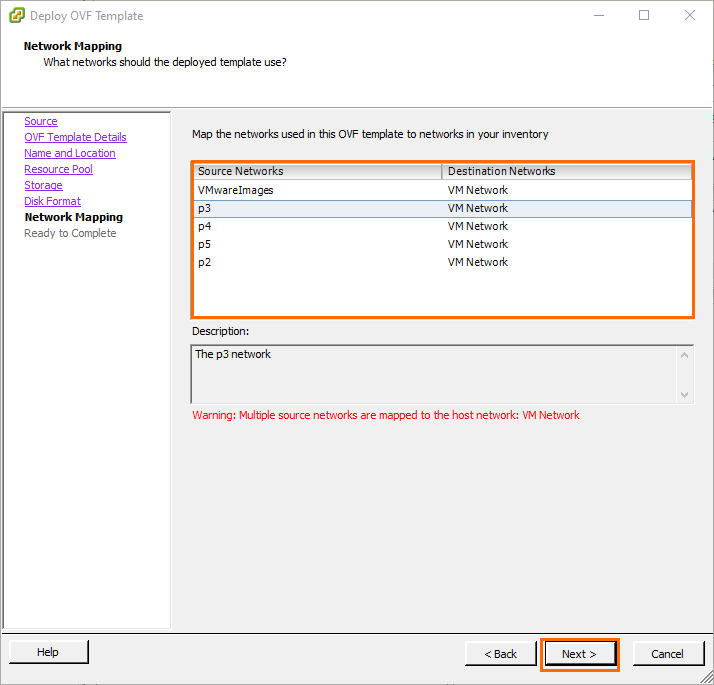
- After the deployment wizard summarizes all your settings, click Finish to start the deployment process.
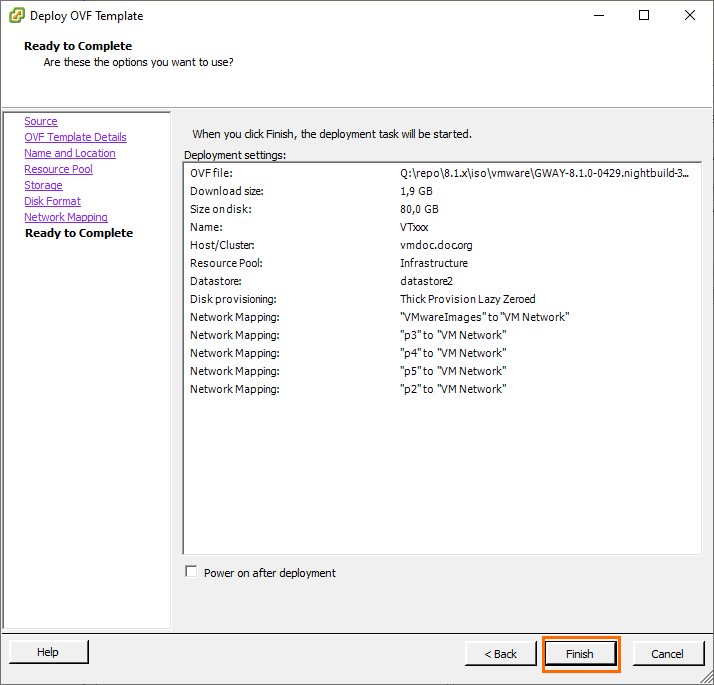
- After successful deployment, the Barracuda SecureEdge VTx unit is displayed in your VMware hypervisor inventory list on the left.
- Select the SecureEdge VTx unit from the list on the left, and edit settings such as Memory with appropriate values. For information regarding the sizing of your CPU, disk, and RAM, see Virtual Systems (VTx) Deployment.
Step 2. Verify that Port 4 of Your VM is Connected to the Internet Using a Network with DHCP
- Connect to your VMware hypervisor using the vSphere client.
- Select the SecureEdge VTx unit from the list on the left and click Edit Settings.
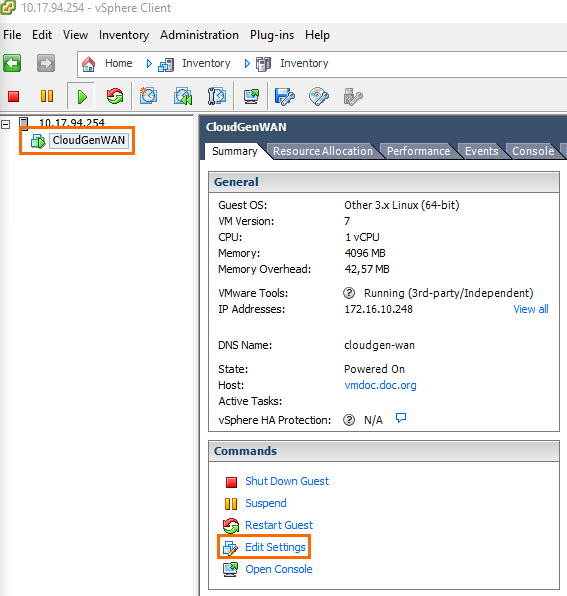
- Click Network Adapter 3 and verify that port 4 of your virtual machine it is connected to a network with Internet connection using DHCP.
- Click Network Adapter 1 and assign a manual MAC address to the first virtual network interface. This lets you move the VM later without invalidating your license.

- Click OK to save your changes.
You can start the virtual machine now.
Step 3. Enter the License Token
- Start the VM and click the Console tab of the virtual machine.
The Barracuda SecureEdge VTx unit boots.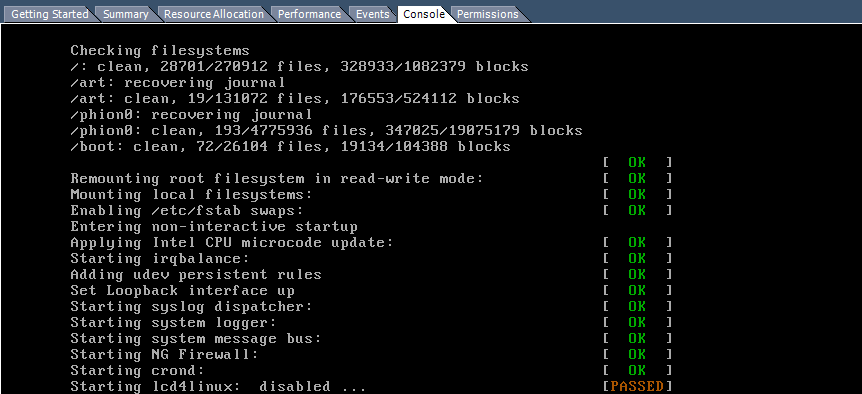
- The SecureEdge unit launches the Active Recovery Technology menu.
- Select SecureEdge with the arrow keys and press Enter.
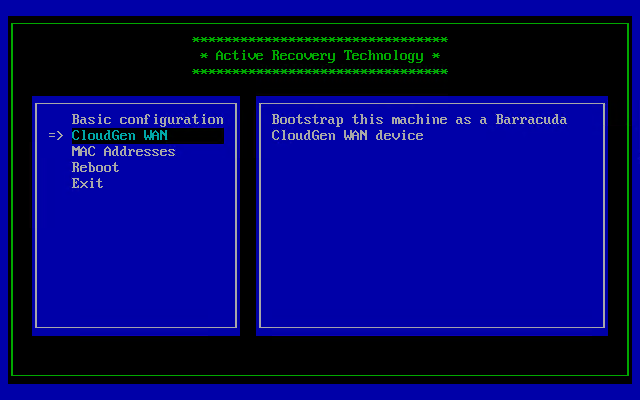
- Enter the License Token.

- Select OK with the arrow keys and press Enter.
- The appliance connects to the SecureEdge service and applies the configuration set in How to Create a T/VT Site Configuration in Barracuda SecureEdge.
